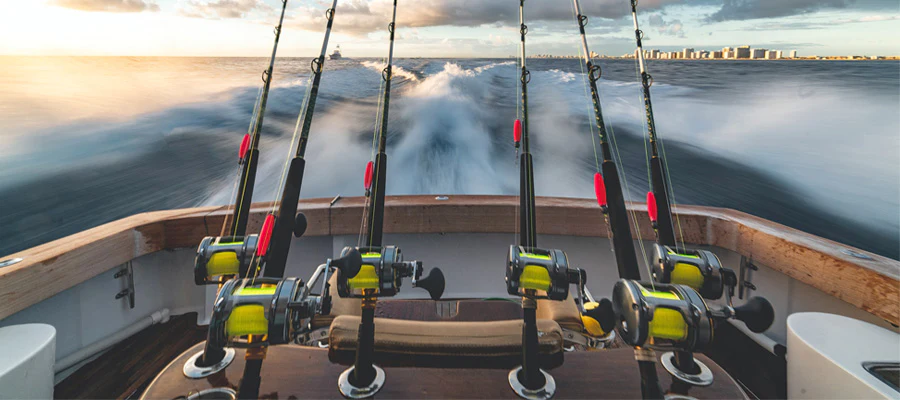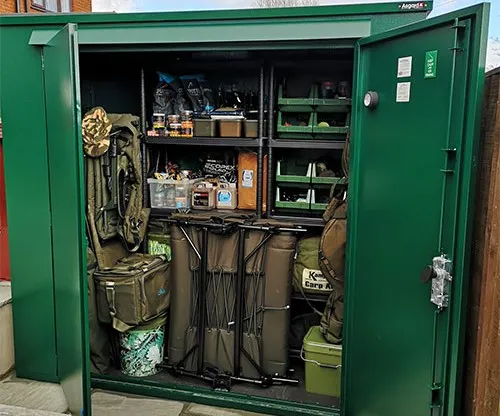ALL About Fishing Pole
Fishing is an age-old pastime enjoyed by many around the world. One of the essential pieces of equipment for fishing is the fishing pole, also known as a fishing rod.
In this article, we’ll explore different types of fishing poles, their features, and how to care for them properly.
1. Fishing Pole
A fishing pole is a long, slender rod used to cast bait or lures into the water and reel in fish. It consists of several components, including a handle, reel seat, guides, and a tip.
Fishing poles come in various lengths, materials, and designs to suit different fishing styles and preferences.
2. Ugly Stik Fishing Pole
The Ugly Stik fishing pole is a popular choice among anglers for its durability and reliability. Made by Shakespeare, Ugly Stik poles are known for their strong construction, making them suitable for various fishing environments, from freshwater lakes to saltwater oceans.
These poles often feature a clear tip design and comfortable grips for extended fishing sessions.

3. Zebco Fishing Pole
Zebco fishing poles are renowned for their simplicity and ease of use, making them ideal for beginners and casual anglers. These poles typically come with a closed-face spinning reel, making casting and reeling in fish straightforward.
Zebco offers a range of fishing poles designed for different fishing applications, including freshwater and saltwater fishing.

4. Fishing Pole Rack
A fishing pole rack is a storage solution designed to organize and store fishing rods when not in use. These racks come in various styles, including wall-mounted racks, freestanding racks, and ceiling-mounted racks.
They help prevent fishing poles from becoming tangled or damaged while keeping them easily accessible for the next fishing trip.

5. Fishing Pole Holders for Boats
Fishing pole holders for boats are specially designed mounts that secure fishing rods in place while fishing from a boat. These holders come in different configurations, including flush mount holders, clamp-on holders, and rail-mounted holders.
They provide a convenient way to keep fishing poles secure and within reach while on the water.

6. Fishing Pole Storage
Proper storage of fishing poles is essential to prolong their lifespan and maintain their performance. When not in use, fishing poles should be stored in a dry, temperature-controlled environment away from direct sunlight.
Avoid storing poles in damp or humid conditions, as this can lead to mold or corrosion.

7. Fishing Pole Case
A fishing pole case is a protective storage container designed to transport fishing rods safely. These cases are typically made from durable materials like nylon or PVC and feature padded compartments to prevent damage during transit.
Some cases also have additional pockets for storing accessories like reels, lures, and tackles.

8. Deep Sea Fishing Pole
Deep sea fishing poles are specifically designed to withstand the rigors of fishing in deep waters for large, powerful fish species.
These poles are typically longer and sturdier than traditional fishing rods and often feature heavy-duty reels and line capacities to handle the demands of deep-sea fishing.

9. Saltwater Fishing Pole
Saltwater fishing poles are designed to withstand the corrosive effects of saltwater environments. They are typically made from corrosion-resistant materials like graphite or stainless steel and feature sealed components to prevent saltwater intrusion.
Saltwater fishing poles come in various lengths and actions to suit different fishing techniques and target species.

Frequently Asked Questions (FAQ)
1. How do I choose the right fishing pole for me?
Choosing the right fishing pole depends on factors such as the type of fishing you’ll be doing, the target species, and your personal preferences. Consider factors like rod length, action, and power when selecting a fishing pole.
2. How should I maintain my fishing pole?
To maintain your fishing pole, rinse it with fresh water after each use to remove salt, sand, and debris. Store it in a dry place away from direct sunlight, and periodically check for any signs of damage or wear.
3. Can I use a freshwater fishing pole for saltwater fishing?
While you can technically use a freshwater fishing pole for saltwater fishing, it’s not recommended due to the corrosive nature of saltwater. Saltwater fishing poles are specifically designed to withstand saltwater environments and are better suited for saltwater fishing.
4. What is the difference between spinning and baitcasting fishing poles?
Spinning rods are typically easier to use and are suitable for beginners, while baitcasting rods offer more accuracy and control for experienced anglers. The choice between the two depends on your fishing style and preferences.
5. How do I store multiple fishing poles efficiently?
You can store multiple fishing poles efficiently using a fishing pole rack or holder. These storage solutions keep rods organized and prevent them from becoming tangled or damaged. Choose a rack or holder that fits your available space and the number of fishing poles you need to store.

